There’s a great smoke monster that lies to the east, 35 miles as the crow flies. For six weeks we’ve lived with him, his sooty, acrid breath billowing in and out of the placid valley I call home, this valley that connects the Puget Sound to the west with the soaring peaks of the Cascades just an hour’s drive to the east. The monster’s presence is a little different each day, depending on the shifting winds and the rising and setting of the sun. But he’s been around every day for six weeks.
The fire burst on the scene on September 10th in the woods just north of Skykomish, near a wilderness area where Sara and I have hiked many times. The nearby jagged peaks—Baring and Merchant and Persis, which I’ve climbed, but also Gunn and Index, which elude me—are instantly visible from way down here in the valley. I’ve stood on the summit of Baring with my friends John and Nick, and my daughter Louisa.
The fire has a name: the Bolt Creek Fire, and it’s drawn a massive response from area firefighters (and from reporters). They say the fire was “human caused,” the fire authorities do, though they’re quick to add that we won’t know the details on this for months, if we ever know at all.
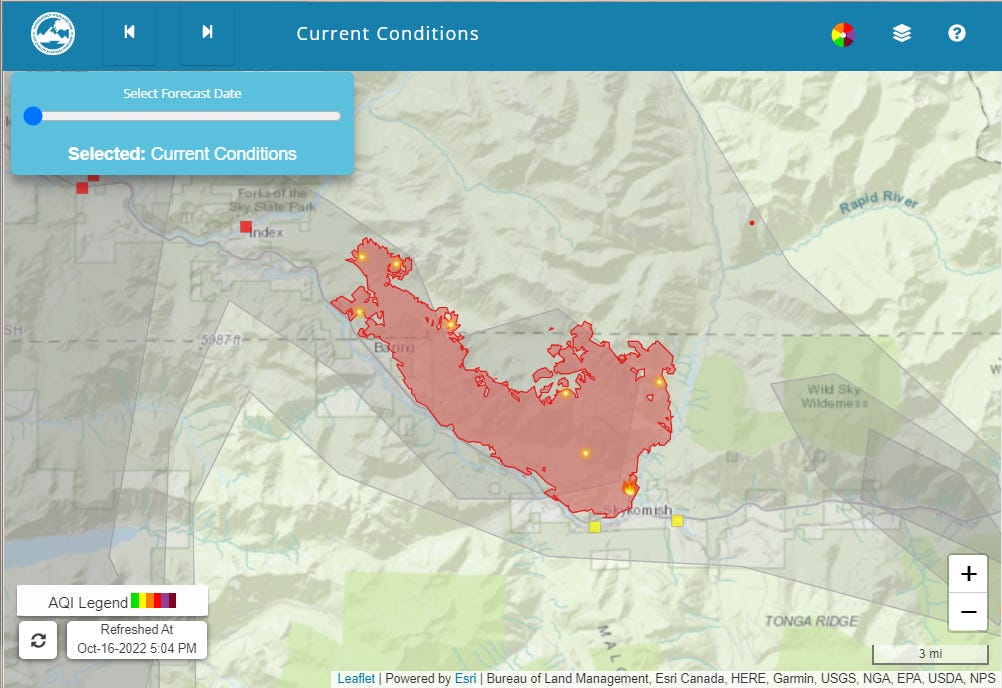
On a good day, if the winds are coming off the coast, the fire is but a distant murky brown cloud, a smokey skirt round the lovely mountains that mark the path that Highway 2, the nearest east-west thoroughfare, takes toward Stevens Pass.

When the wind shifts—with the heat of yet another clear day or with the improbable arrival of a mid-October high-pressure system that shifts the flow of air down the slopes of the Cascades and towards the lowlands—the smoke burgles its way down the valley, a soft brown-white monster mixing with fog in the valley bottom, spreading further and further west until it fills the entire Puget Sound Basin, all the way out to the islands. It’s a breathing beast, its breath harrumphing in and out across hundreds of square miles.
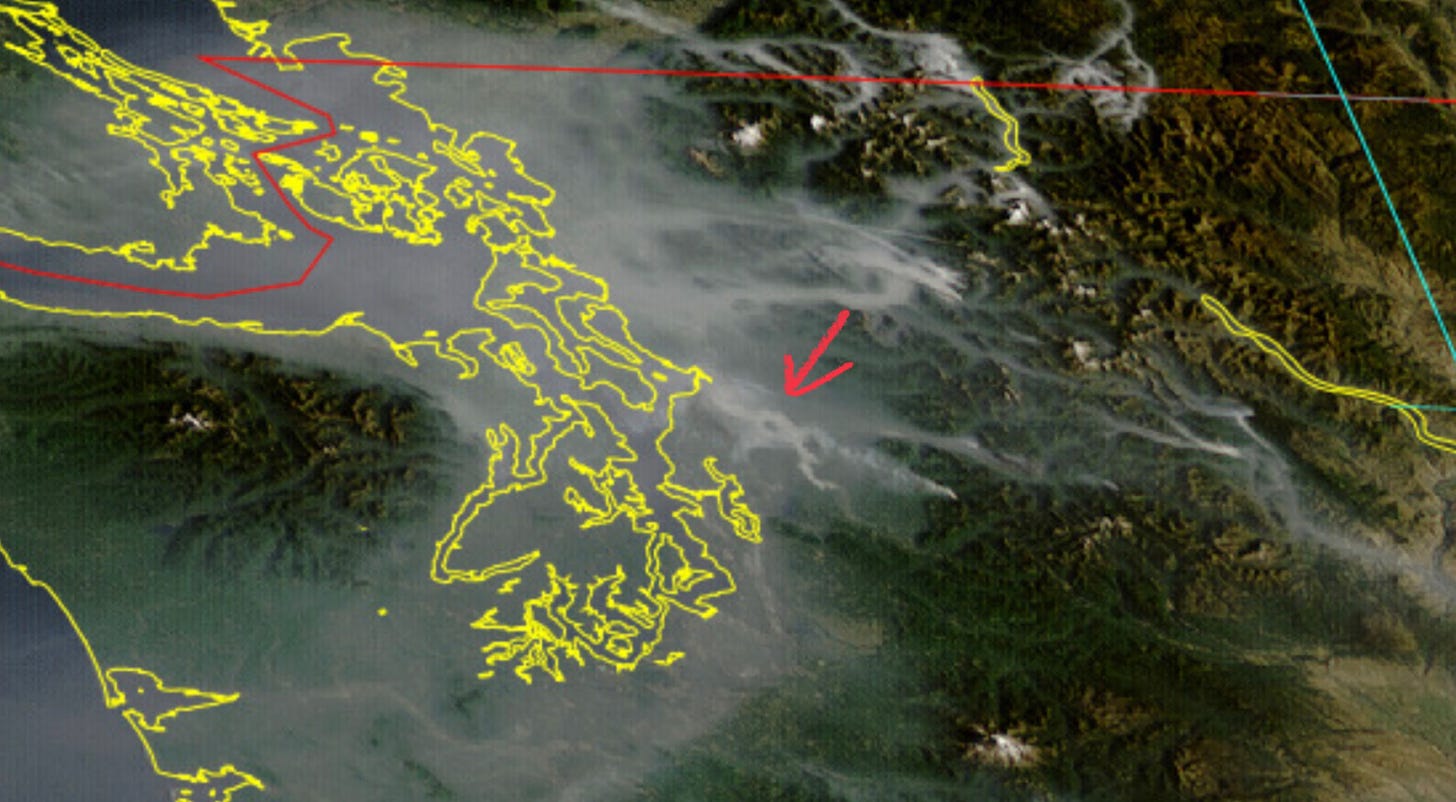
On Sunday, October 16, I sit on my back porch on one of the warmest mid-October days on record, the smoke is smothering, burning my eyes and throat, shedding its light particulate ash all over our blue porch furniture, like so much dandruff. The day started off with a burning red orb just penetrating the low fog that lay on the slough.
The Great Smoke Monster lies to the east and we await the only thing capable of taming him: a steady, soaking rain, the kind we’ll rue soon enough. They said it would be here 10 days ago, but the weather defied predictions, the jet stream staying north while we suffered. They say the rains are coming soon, maybe this weekend. It’s been 100 days.
A good rain is the only thing that will kill the Great Smoke Monster to the east. I welcome its arrival.
To learn more about the Bolt Creek Fire (while it’s still around), check out some of the following:
The most complete source of fire information is the Washington Smoke Information website, https://wasmoke.blogspot.com/. Some of the smoke maps above come from there.
My favorite source of information about how weather impacts the fire (and vice versa) is the always terrific Cliff Mass: https://cliffmass.blogspot.com.
A Facebook page popped up to convey official information about the fire on social media and it’s been very useful, in part because it humanizes all the folks who are fighting the fire (it’s probably safe to call them heroes). https://www.facebook.com/boltcreekfireinfo
The Facebook site above is the work of the Northwest Region of the Department of Natural Resources, which runs this incident information site: https://inciweb.nwcg.gov/incident/8417/
The Seattle Times has offered steady coverage of the fire. The terrific picture of the fire raging over Mt. Baring is from their coverage.



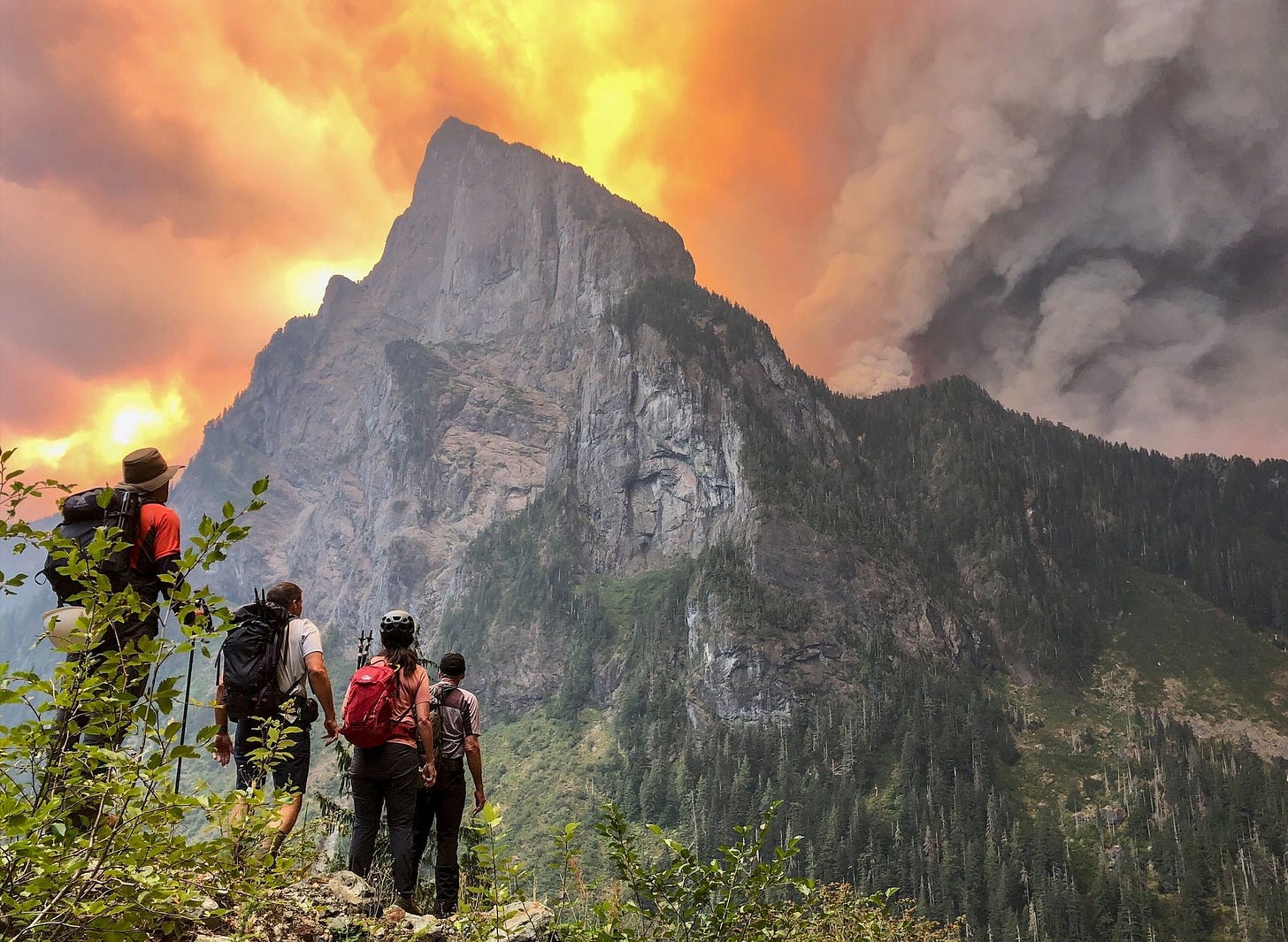



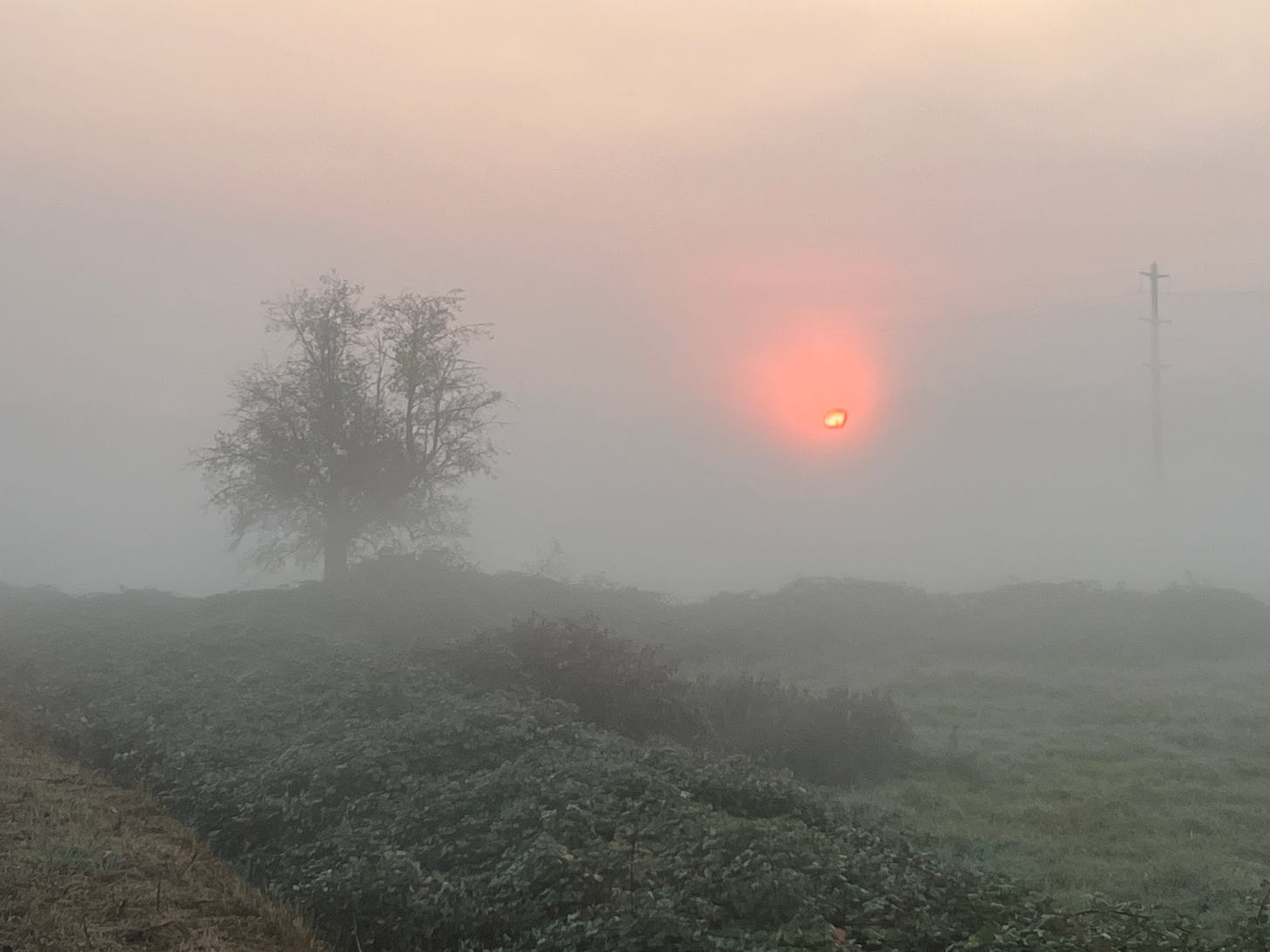
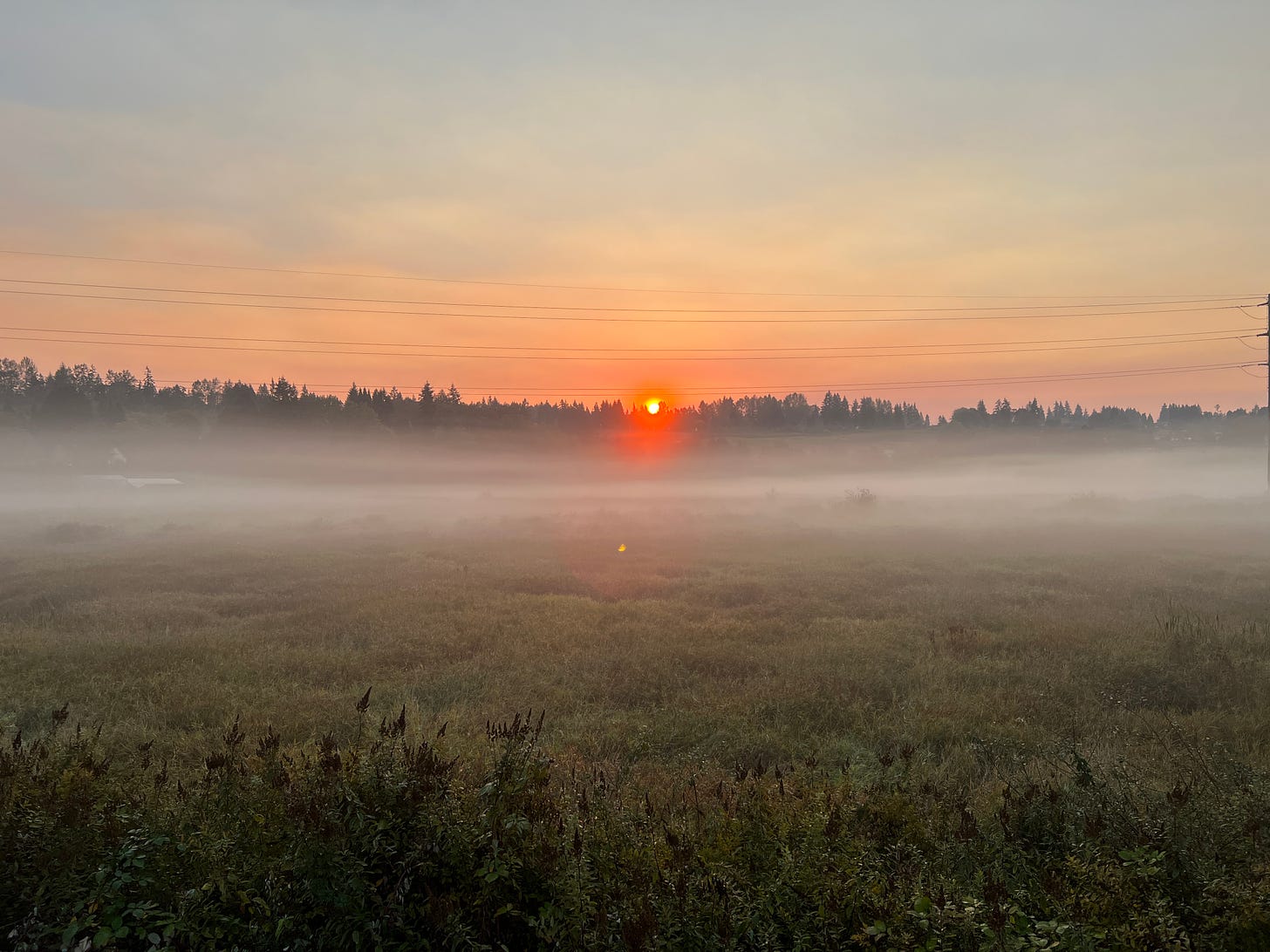
So on those days where the smoke is at it's worst and for people that live even closer, do they wear masks and some sort of eye protection? Where you live is a gorgeous area.
Wow! Thanks for posting, Tom.